
How to Use DC-DC Step-Down Buck Converter Power Supply Module 24V 12V 9V to 5V 5A 25W: Examples, Pinouts, and Specs
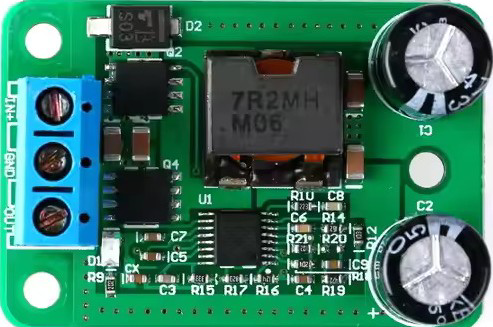
 Design with DC-DC Step-Down Buck Converter Power Supply Module 24V 12V 9V to 5V 5A 25W in Cirkit Designer
Design with DC-DC Step-Down Buck Converter Power Supply Module 24V 12V 9V to 5V 5A 25W in Cirkit DesignerIntroduction
The DC-DC Step-Down Buck Converter Power Supply Module is a versatile and efficient voltage regulator designed to step down higher input voltages (24V, 12V, 9V) to a stable 5V output. With a maximum current output of 5A and a power rating of 25W, this module is ideal for powering low-voltage devices such as microcontrollers, sensors, and USB-powered devices. Its compact design and high efficiency make it a popular choice for embedded systems, robotics, and portable electronics.
Explore Projects Built with DC-DC Step-Down Buck Converter Power Supply Module 24V 12V 9V to 5V 5A 25W
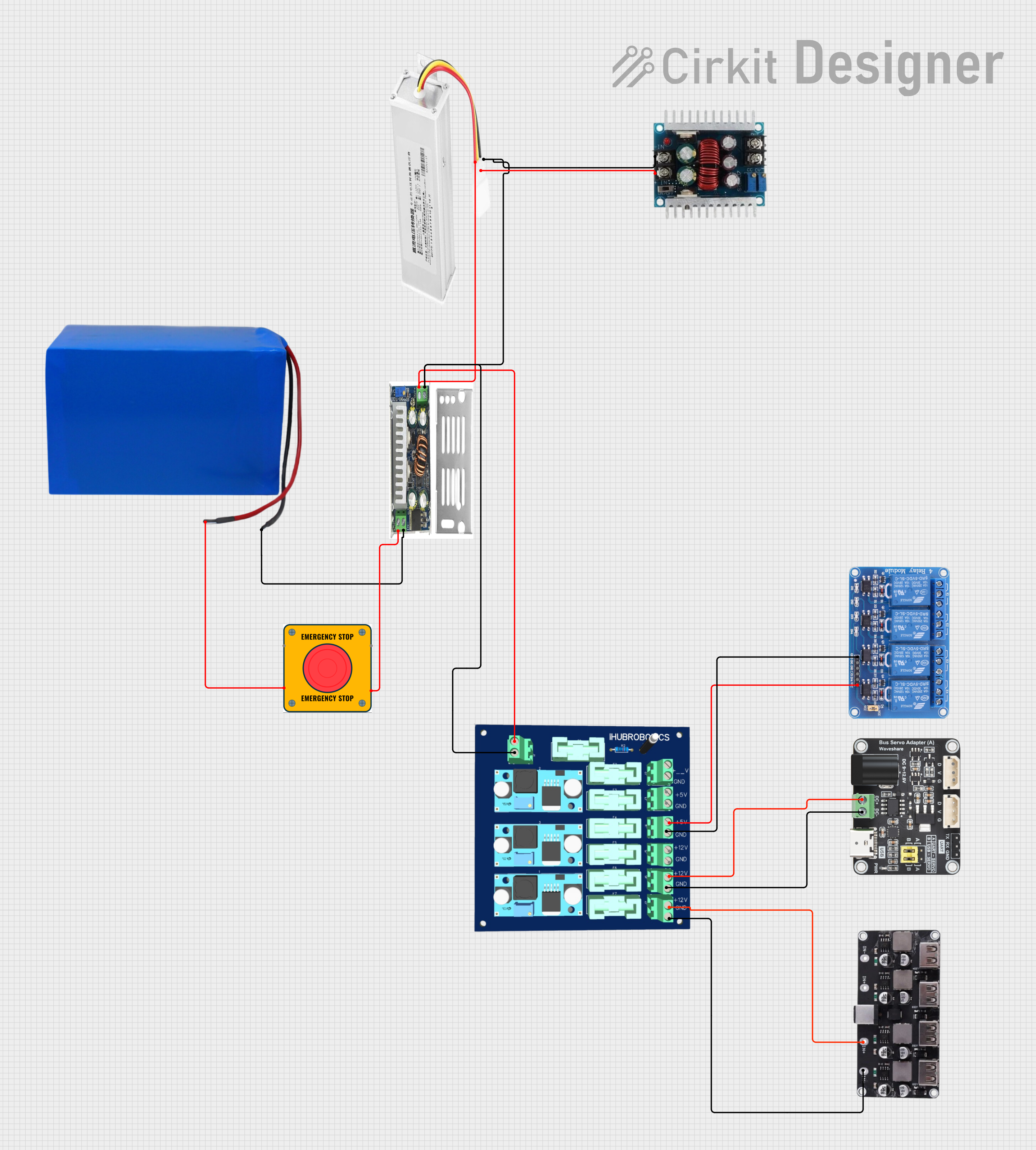
 Open Project in Cirkit Designer
Open Project in Cirkit Designer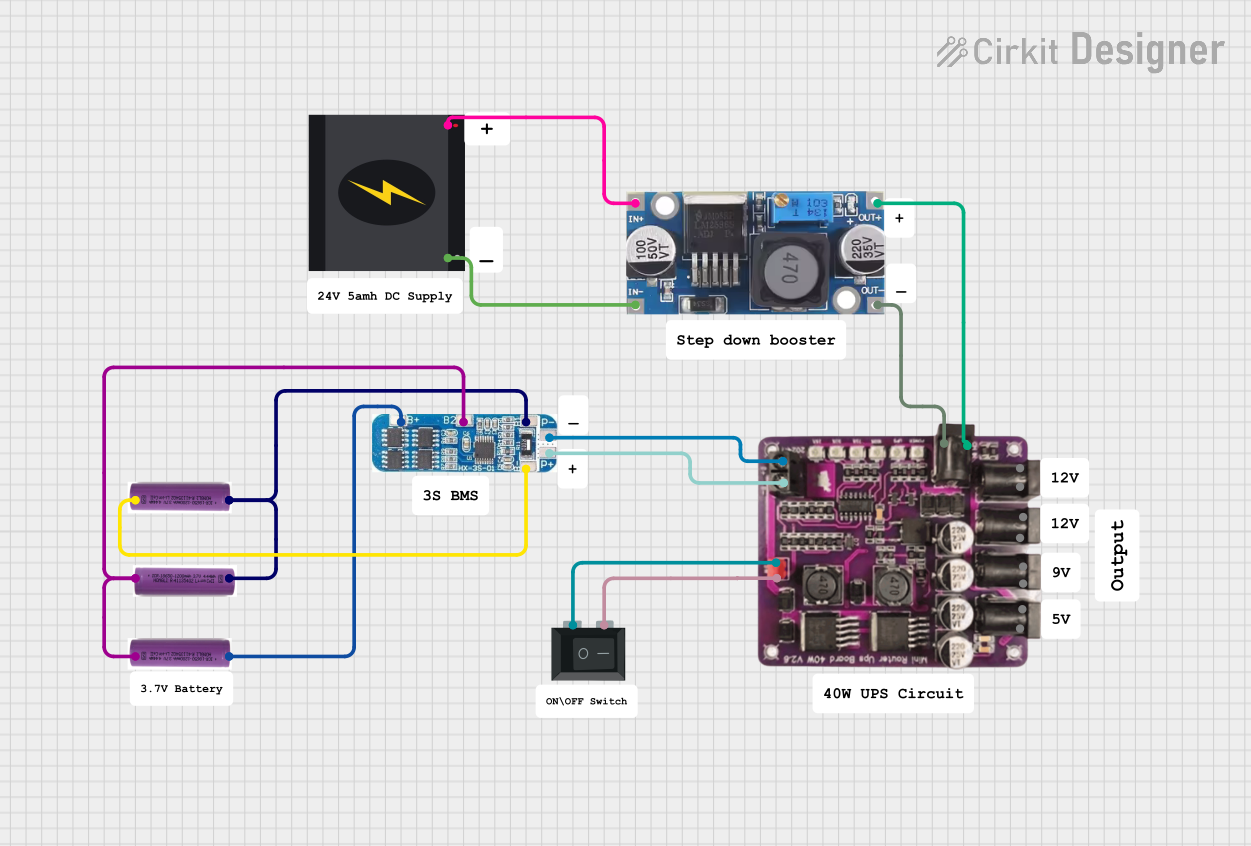
 Open Project in Cirkit Designer
Open Project in Cirkit Designer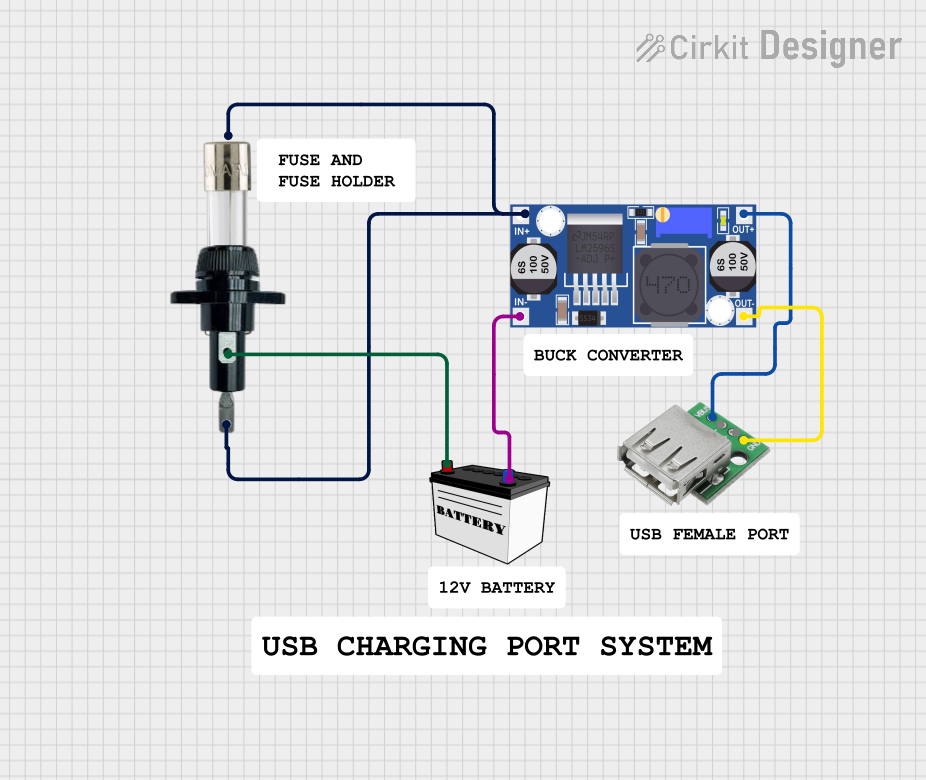
 Open Project in Cirkit Designer
Open Project in Cirkit Designer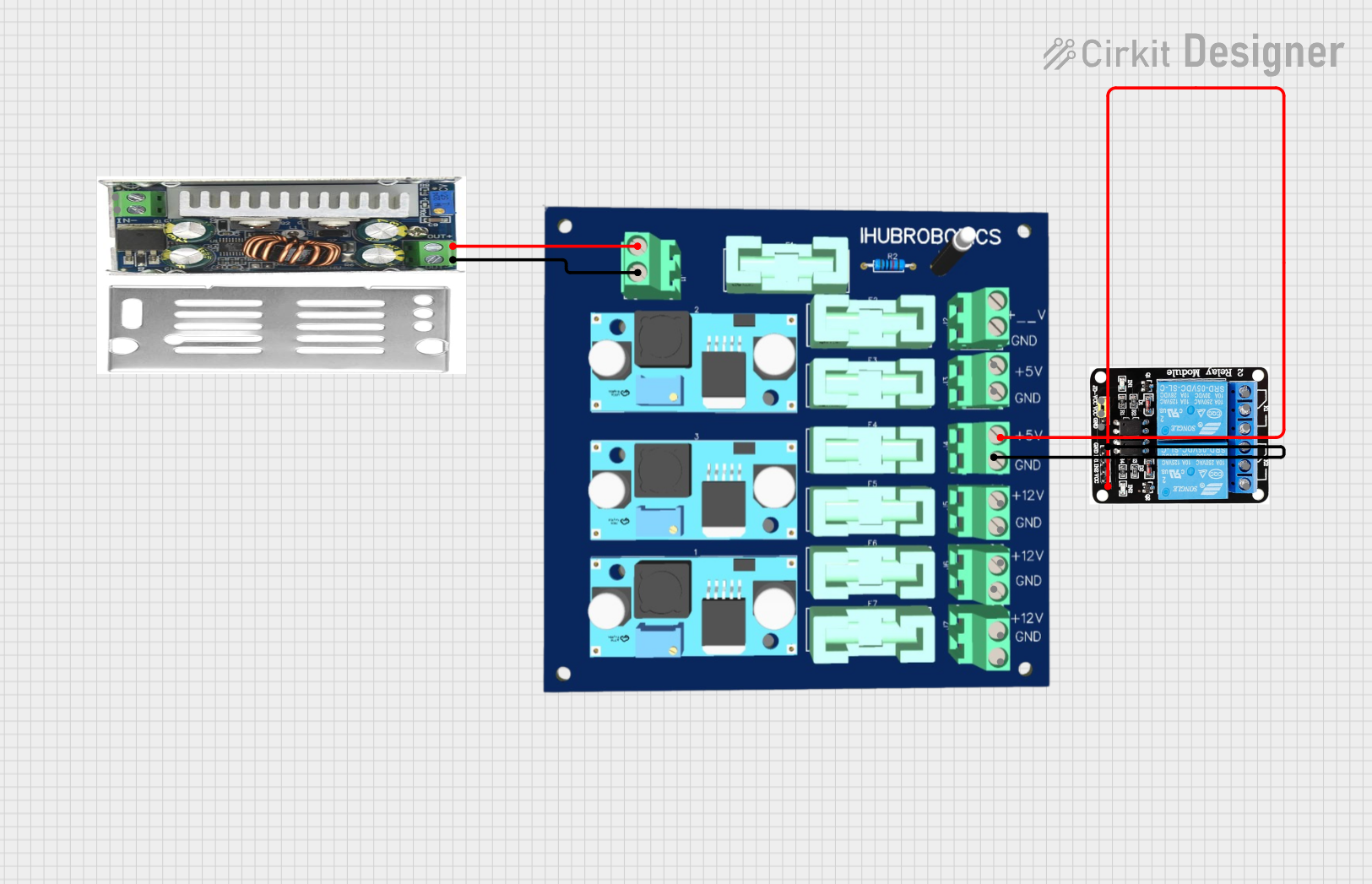
 Open Project in Cirkit Designer
Open Project in Cirkit DesignerExplore Projects Built with DC-DC Step-Down Buck Converter Power Supply Module 24V 12V 9V to 5V 5A 25W

 Open Project in Cirkit Designer
Open Project in Cirkit Designer
 Open Project in Cirkit Designer
Open Project in Cirkit Designer
 Open Project in Cirkit Designer
Open Project in Cirkit Designer
 Open Project in Cirkit Designer
Open Project in Cirkit DesignerCommon Applications
- Powering microcontrollers (e.g., Arduino, Raspberry Pi)
- USB device charging
- Robotics and automation systems
- Battery-powered devices
- LED lighting systems
Technical Specifications
Key Specifications
| Parameter | Value |
|---|---|
| Input Voltage Range | 6V to 32V |
| Output Voltage | 5V (fixed) |
| Maximum Output Current | 5A |
| Maximum Output Power | 25W |
| Efficiency | Up to 96% |
| Operating Temperature | -40°C to +85°C |
| Dimensions | ~60mm x 21mm x 14mm |
Pin Configuration and Descriptions
| Pin Name | Description |
|---|---|
| VIN+ | Positive input voltage (6V to 32V) |
| VIN- | Negative input voltage (ground) |
| VOUT+ | Positive output voltage (5V) |
| VOUT- | Negative output voltage (ground) |
Usage Instructions
How to Use the Component in a Circuit
Connect the Input Voltage:
- Connect the positive terminal of your power source (6V to 32V) to the
VIN+pin. - Connect the negative terminal of your power source to the
VIN-pin.
- Connect the positive terminal of your power source (6V to 32V) to the
Connect the Output Load:
- Connect the positive terminal of your load (e.g., microcontroller, USB device) to the
VOUT+pin. - Connect the negative terminal of your load to the
VOUT-pin.
- Connect the positive terminal of your load (e.g., microcontroller, USB device) to the
Verify Connections:
- Double-check all connections to ensure proper polarity and secure wiring.
Power On:
- Turn on the power source. The module will regulate the input voltage to a stable 5V output.
Important Considerations and Best Practices
- Input Voltage Range: Ensure the input voltage is within the specified range (6V to 32V). Exceeding this range may damage the module.
- Heat Dissipation: At high currents (e.g., 5A), the module may generate heat. Use a heatsink or active cooling if necessary.
- Load Requirements: Ensure the connected load does not exceed the maximum output current (5A) or power (25W).
- Polarity Protection: Double-check the polarity of the input and output connections to avoid damage.
Example: Using with an Arduino UNO
The DC-DC buck converter can be used to power an Arduino UNO from a 12V battery. Below is an example circuit and Arduino code to blink an LED.
Circuit Connections
- Connect the 12V battery's positive terminal to
VIN+and negative terminal toVIN-. - Connect
VOUT+to the Arduino's 5V pin andVOUT-to the Arduino's GND pin. - Connect an LED with a 220-ohm resistor to Arduino pin 13.
Arduino Code
// Simple LED blink example for Arduino UNO
// This code blinks an LED connected to pin 13 every second.
void setup() {
pinMode(13, OUTPUT); // Set pin 13 as an output
}
void loop() {
digitalWrite(13, HIGH); // Turn the LED on
delay(1000); // Wait for 1 second
digitalWrite(13, LOW); // Turn the LED off
delay(1000); // Wait for 1 second
}
Troubleshooting and FAQs
Common Issues and Solutions
No Output Voltage:
- Cause: Incorrect input voltage or loose connections.
- Solution: Verify that the input voltage is within the 6V to 32V range and check all connections.
Overheating:
- Cause: High current draw or insufficient cooling.
- Solution: Reduce the load current or add a heatsink/active cooling to the module.
Output Voltage Fluctuations:
- Cause: Input voltage instability or excessive load.
- Solution: Use a stable power source and ensure the load does not exceed 5A.
Module Not Working After Connection:
- Cause: Reverse polarity or overvoltage.
- Solution: Check the polarity of the input and output connections. Replace the module if damaged.
FAQs
Q: Can this module output voltages other than 5V?
A: No, this module has a fixed 5V output.Q: Can I use this module to charge a smartphone?
A: Yes, as long as the input voltage is within range and the smartphone's charging current does not exceed 5A.Q: Is the module waterproof?
A: No, the module is not waterproof. Use it in a dry environment or enclose it in a waterproof case.Q: Can I use this module with a solar panel?
A: Yes, as long as the solar panel's output voltage is within the 6V to 32V range.